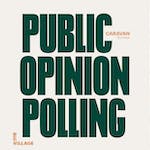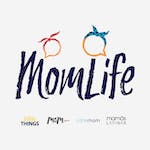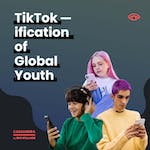So, what happens when you order an Uber for yourself?
- It asks you, ‘Where to?’: because it already knows where you are.
- It automatically populates the address after you type in 2-3 words: because it knows the address you are going to.
- It then tells you the name of the person who is coming to pick you up and also the car they are driving: because it knows it is easier to find your car that way and not get confused.
- It also calculates the number of rides you have taken and offers you a discount: because it knows how to make you feel special!
It almost makes you feel like this whole experience is tailor-made for you to make your life convenient and better.
This is what is called: Personalization
In a recent CARAVAN survey, when we asked consumers what Personalization meant to them, they described it as: Making something your own.
59% of the consumers stated personalization enhanced their social media experience followed by 57% stating online shopping and 49% stating streaming services.
Which of the following areas do you believe personalization plays a significant role in?
One of the best examples consumers provided us of personalization in today’s world is the TikTok algorithm. It effectively analyzes users’ interests and interactions with videos, and then recommends more content that aligns with their preferences, providing a personalized and engaging experience
How personalization across different industries looks:
Social Media
Feed Customization: Social media platforms use algorithms to personalize users’ feeds based on their interests, preferences, and engagement patterns. The goal is to show users content they are more likely to find engaging, increasing their time spent on the platform. This can help users discover relevant content and connect with like-minded individuals.
Targeted Advertising: Social media platforms leverage personalization to deliver targeted advertisements to users. By analyzing users’ demographics, interests, and online behavior, platforms can show ads that are more relevant and appealing to individual users. This can result in a more personalized advertising experience and potentially lead to higher conversion rates for advertisers.
Recommended Connections: Social media platforms often suggest potential connections to users based on their existing network, interests, and mutual connections. This personalized recommendation feature helps users expand their network and connect with people who share similar interests or professional backgrounds.
Content Curation: Personalization algorithms curate content for users by filtering and prioritizing posts, stories, and other media based on their preferences. This helps users find content that aligns with their interests and can enhance their overall social media experience.
Personalized Notifications: Social media platforms send personalized notifications to users to keep them engaged and informed about updates, activities, and interactions related to their network. These notifications are tailored to each user’s specific interactions and preferences, encouraging them to stay active on the platform.
Online Shopping
Product Recommendations: E-commerce platforms use personalized recommendation algorithms to suggest products to users based on their browsing history, purchase history, and demographic information. These recommendations can help users discover relevant products they might be interested in, making the shopping experience more convenient and tailored to their preferences.
Personalized Offers and Discounts: Online retailers often personalize promotional offers and discounts based on individual customer behavior and preferences. This could include sending targeted discount codes, exclusive offers, or personalized deals via email or on-site notifications. By tailoring discounts to specific customers, retailers can incentivize purchases and foster customer loyalty.
Customized User Interfaces: E-commerce websites and apps can personalize the user interface based on individual preferences and behaviors. This may involve displaying recently viewed items, saved favorites, or personalized product categories on the homepage. By presenting a personalized interface, users can quickly access relevant products and streamline their shopping process.
Size and Fit Recommendations: Personalization is utilized to help customers find the right size and fit when shopping for clothing, footwear, or other items with size variations. By collecting data on customers’ previous purchases, returns, and feedback, retailers can offer personalized size recommendations, reducing the likelihood of returns due to size-related issues.
Personalized Search Results: Online shopping platforms personalize search results based on individual preferences and search history. This ensures that users see the most relevant products at the top of their search results, saving time and effort in finding the desired items.
Post-Purchase Personalization: After a purchase, e-commerce platforms can continue to personalize the customer experience. This may include sending personalized order confirmations, shipping notifications, and follow-up emails with related product recommendations or exclusive offers.
User Reviews and Ratings: Online retailers often display user reviews and ratings for products, which can help customers make informed decisions. Personalization algorithms can analyze a customer’s past reviews and ratings to show them reviews from users with similar preferences, making the information more relevant and reliable.
Streaming Services
Content Recommendations: Streaming platforms employ personalization algorithms to analyze a user’s viewing history, preferences, and behavior to provide personalized content recommendations. These recommendations suggest movies, TV shows, or other media that align with the user’s interests, making it easier to discover new content.
Personalized Playlists and Collections: Streaming services often create personalized playlists or collections based on user preferences. For example, platforms may curate “Recommended for You” or “Continue Watching” sections that feature content the user is likely to enjoy or has previously started watching.
Algorithmic Content Curation: Personalization algorithms determine the order in which content is displayed to users on the platform’s homepage or category pages. The algorithms consider factors such as the user’s viewing history, ratings, and popularity of content to showcase personalized recommendations and increase engagement.
User-Specific Ratings and Reviews: Streaming services allow users to rate and review the content they watch. These ratings and reviews contribute to personalization by influencing future recommendations and helping users discover content based on the feedback of others with similar tastes.
Watch History and Resume Playback: Streaming platforms leverage personalization to remember a user’s watch history and allow them to resume playback across devices. This feature ensures a seamless viewing experience by remembering where the user left off in a movie or TV show, regardless of the device they are using.
Personalized Notifications: Streaming services may send personalized notifications to users about new releases, recommended content, or updates related to their favorite shows or genres. These notifications help users stay informed and engaged with the platform.
Genre and Theme Preferences: Streaming platforms personalize the user experience by allowing users to select their preferred genres or themes. This preference influences the types of content that are suggested and recommended to the user, ensuring a more tailored experience.
Parental Controls: Personalization features extend to parental controls, allowing parents to set content restrictions based on their preferences and the age of the intended viewer. This helps ensure that the content available to children aligns with parental guidelines and preferences.
Personalized Learning and Education
Adaptive Learning Platforms: Adaptive learning systems utilize personalization algorithms to adjust the pace, content, and delivery of educational materials based on individual student performance and progress. These platforms can identify areas of strengths and weaknesses and provide targeted instruction and practice to address individual learning needs.
Individualized Learning Plans: Personalization allows educators to create individualized learning plans for students. These plans consider students’ unique abilities, interests, and goals, outlining specific learning objectives, strategies, and resources to support their academic progress. Individualized plans help students take ownership of their learning and progress at their own pace.
Differentiated Instruction: Personalization in education promotes differentiated instruction, where teachers modify their instructional approaches, activities, and materials to accommodate the diverse needs of students. By recognizing and responding to individual differences, teachers can provide tailored support and challenges to optimize learning outcomes.
Customized Content and Resources: Personalized learning leverages technology to provide students with customized content and resources that suit their learning preferences and abilities. This may include interactive e-books, online courses, educational apps, and multimedia resources that can be accessed anytime, anywhere.
Personalized Assessments: Personalization extends to assessments, where educators employ varied assessment methods and formats to gauge student understanding and progress. This can include formative assessments, project-based assessments, and adaptive assessments that adapt to the student’s knowledge and provide targeted feedback.
Student Choice and Voice: Personalization in education emphasizes student agency, allowing learners to have a voice in their learning journey. Students can choose topics of interest, pursue passion projects, and engage in self-directed learning, fostering intrinsic motivation and ownership over their education.
Learning Analytics: Personalization is enhanced through the use of learning analytics, which involve collecting and analyzing data on student performance, engagement, and behavior. These insights help educators identify patterns, make data-informed decisions, and provide targeted interventions to support student progress.
Collaborative and Peer Learning: Personalization acknowledges the social aspect of learning, encouraging collaborative and peer learning opportunities. By facilitating interactions and group work, students can learn from and with their peers, fostering a supportive and diverse learning environment.
Consumers also spoke to us about how beneficial personalization is in their daily life
Saving Time:
In a world which believes less is more, personalized recommendations based on the consumers preferences and past behavior help discover relevant products, services, or content quickly. This eliminates the need to spend time searching or browsing through irrelevant options
Tailored Recommendations:
Personalization provides consumers a relevant and meaningful experience that resonates with them on a deeper level. Targeted content and offers results in a more satisfying and enjoyable customer journey.
Feeling Unique and Special:
Consumers feel acknowledged, understood, and valued as unique individuals when products are personalized as per their liking. Personalization enhances the overall customer experience and fosters a deeper connection between the consumers and the brand.
Easier Decision Making:
Tailoring information and options to individual preferences, needs, and circumstances helps consumers make easier
Increased Customer Engagement:
Personalized experiences encourage consumers to actively engage with a brand. Consumers feel understood and valued and hence, they like to interact with the brand’s offerings, provide feedback, and become brand advocates, ultimately leading to increased customer loyalty.
Consumers also mentioned that personalized recommendations/messaging is the aspect of personalization they liked the most followed by tailored advertising and marketing campaigns.
Which aspects of personalization do you appreciate the most in the following area(s)?
Online Shopping
Personalization makes consumers feel special. It humanizes the brand in a way where consumers feel cared for and not just targeted for sales!
Personalization created a sense of exclusivity and connection, leading to increased engagement, loyalty, and ultimately, long-term success between brands and consumers.
Embracing personalization in all aspects of a brand’s communication, product offerings, and customer experiences is key to staying relevant in a competitive market and driving meaningful customer relationships.
Conclusion
The power of personalization cannot be overemphasized in today’s competitive business landscape. It marks a shift from a one-size-fits-all approach to a strategy that values individual customer preferences and behaviors. By implementing personalization tactics, companies can build deeper connections with their customers, drive increased loyalty, and significantly boost their bottom lines. As technology advances and data becomes more accessible, the opportunities for personalization will only continue to expand, making it an indispensable tool for businesses aiming for growth and success.
Written by Brian Janovsky, VP, Digital Hives and Shruthi Venkatesh, Director, Digital Hives at Big Village Insights.









